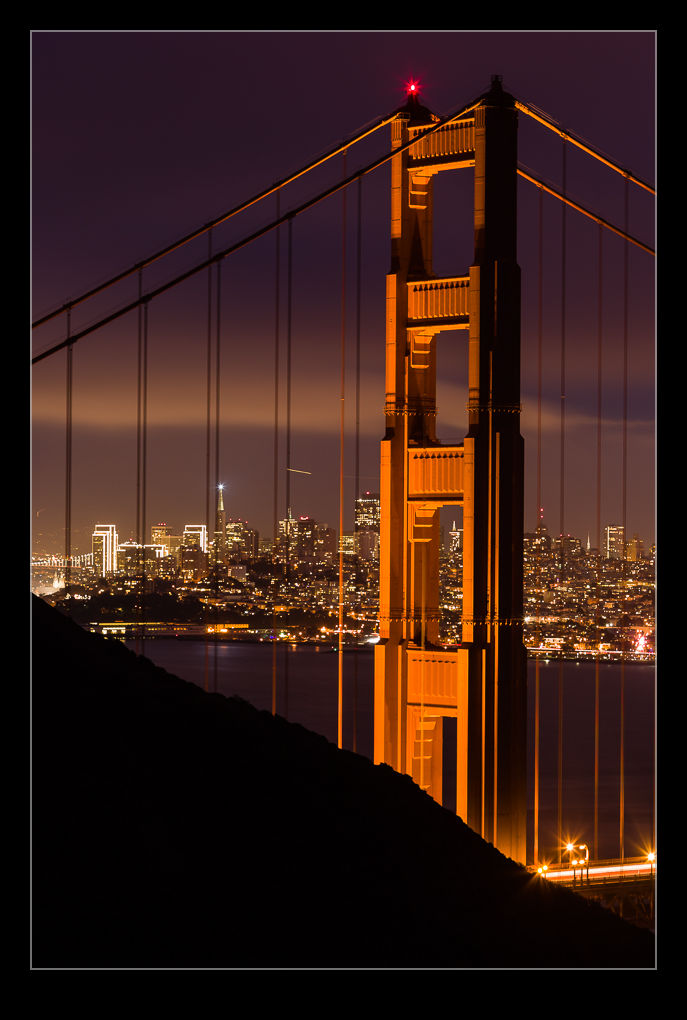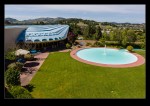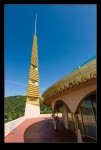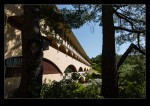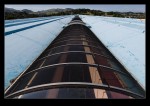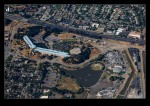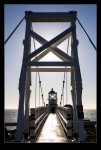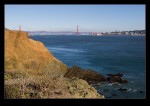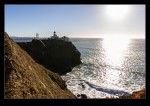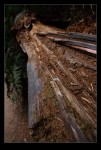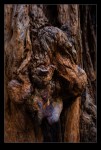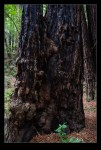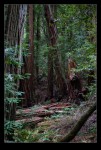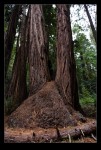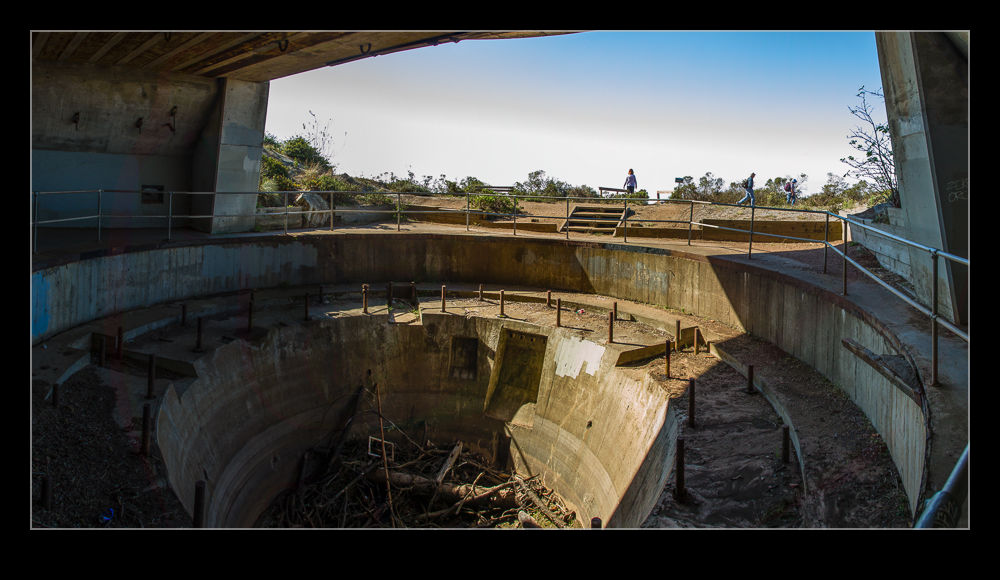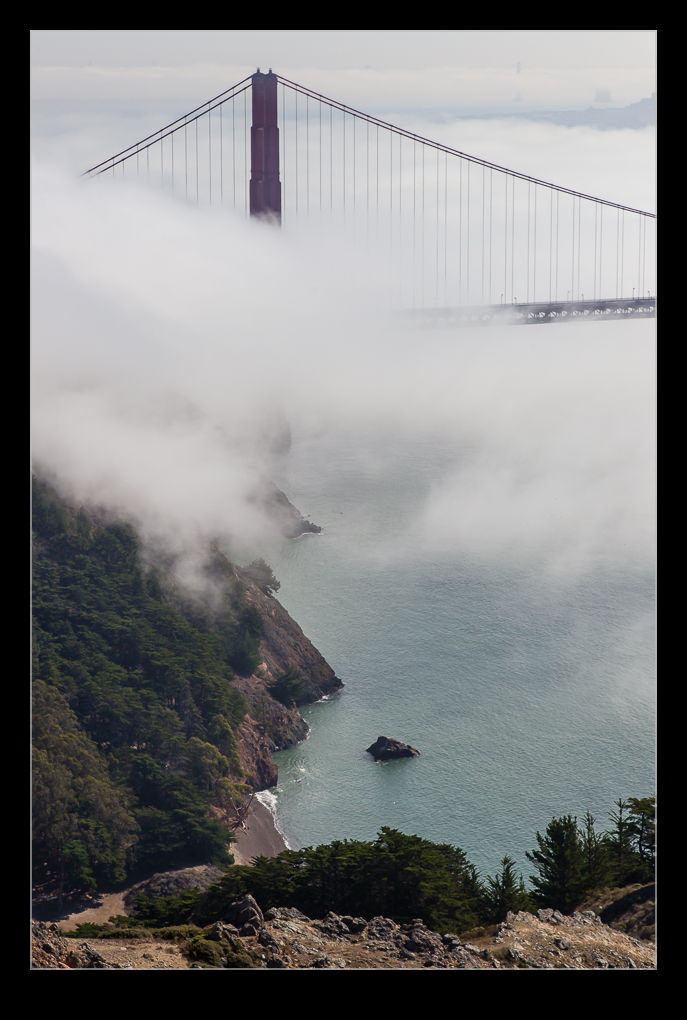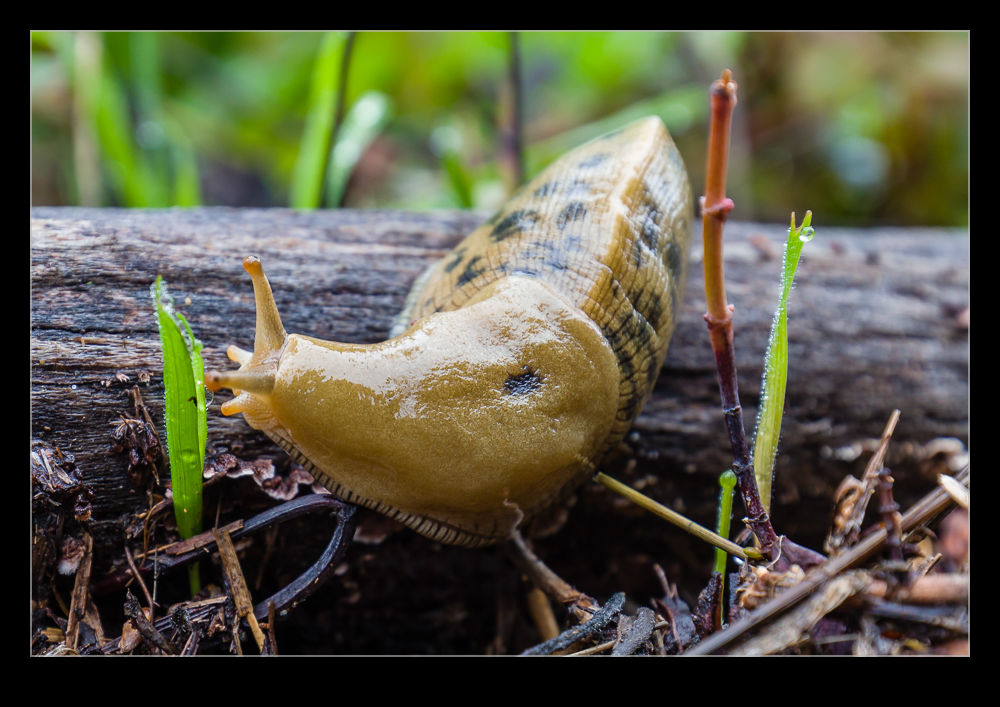 Close to where I parked my car up on Mt Tam, I saw a banana slug. They are cool looking things so I couldn’t resist the temptation to try and photograph it. There wasn’t much light and he was on the move but I still got a few shots.
Close to where I parked my car up on Mt Tam, I saw a banana slug. They are cool looking things so I couldn’t resist the temptation to try and photograph it. There wasn’t much light and he was on the move but I still got a few shots.
Tag Archives: Marin
Golden Gate After Dark
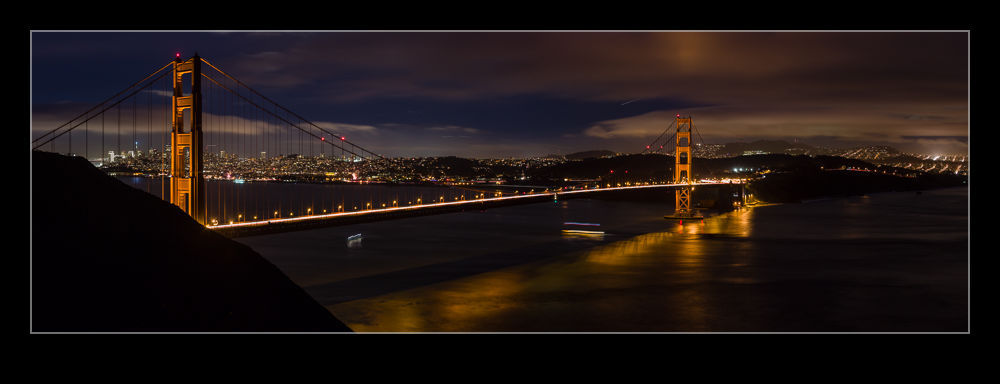 A previous post showed the time lapse video I created from me shot sequence on the Marin Headlands. I didn’t just sit and let the sequence go, though. I also had a second body and took shots with that. Unfortunately, I only took one tripod with me so the initial shots were handheld trying to make use of reasonable handholding technique combined with the benefits of image stabilization in the lenses.
A previous post showed the time lapse video I created from me shot sequence on the Marin Headlands. I didn’t just sit and let the sequence go, though. I also had a second body and took shots with that. Unfortunately, I only took one tripod with me so the initial shots were handheld trying to make use of reasonable handholding technique combined with the benefits of image stabilization in the lenses.
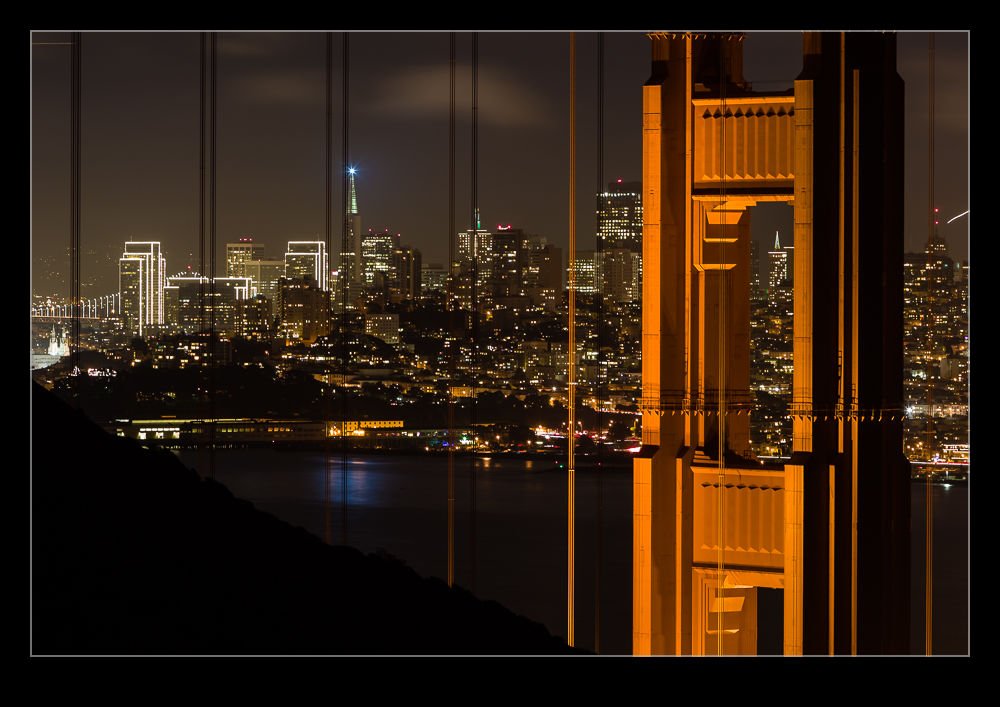 Once the time lapse sequence was done, I was able to use the tripod to get some shots in the dark. Cities always look cool at night. The proliferation of lights makes an interesting skyline look even better. Combine with that the motion of some elements and things get interesting. The motion can help or hinder. Streaking car lights are good but planes in the sky can be a distraction since they take on a significance that was never there when you saw the view.
Once the time lapse sequence was done, I was able to use the tripod to get some shots in the dark. Cities always look cool at night. The proliferation of lights makes an interesting skyline look even better. Combine with that the motion of some elements and things get interesting. The motion can help or hinder. Streaking car lights are good but planes in the sky can be a distraction since they take on a significance that was never there when you saw the view.
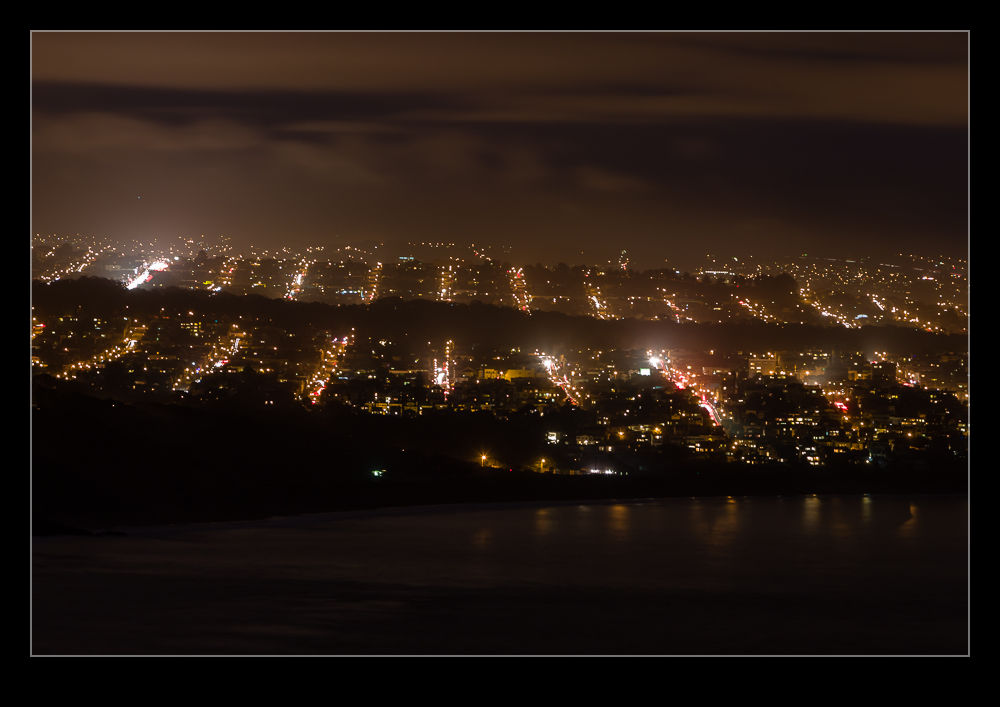 The Golden Gate Bridge is an interesting foreground element. I chose the spot I wanted, even though I couldn’t park there. I parked further up the hill and walked down. (The walk back in the pitch black was a touch more interesting since the path is narrow at points and drops away very steeply!) Getting the white balance right to show the bridge color as it appears at the time is tricky. Auto analysis is not much use and there are few things that you can sample to give an accurate gray.
The Golden Gate Bridge is an interesting foreground element. I chose the spot I wanted, even though I couldn’t park there. I parked further up the hill and walked down. (The walk back in the pitch black was a touch more interesting since the path is narrow at points and drops away very steeply!) Getting the white balance right to show the bridge color as it appears at the time is tricky. Auto analysis is not much use and there are few things that you can sample to give an accurate gray.
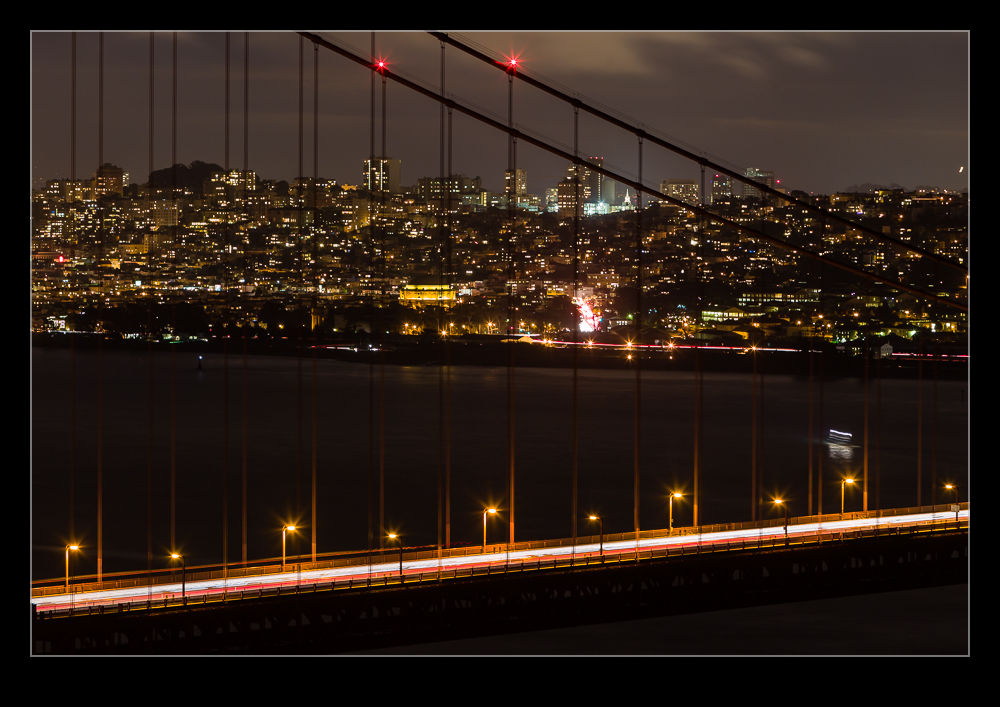 I have enjoyed night photography since I first started taking pictures. There is something quite peaceful about being out at night with your camera. However, this location probably doesn’t fit that mold. The place was busy the entire time. Meanwhile, I could watch numerous people taking pictures of themselves and the view struggling to understand why the camera “wasn’t working right”. I helped out a few but, after a while, I decided it was easier to just relax and let everyone do their thing. Without a tripod, there was only so much you could do to help.
I have enjoyed night photography since I first started taking pictures. There is something quite peaceful about being out at night with your camera. However, this location probably doesn’t fit that mold. The place was busy the entire time. Meanwhile, I could watch numerous people taking pictures of themselves and the view struggling to understand why the camera “wasn’t working right”. I helped out a few but, after a while, I decided it was easier to just relax and let everyone do their thing. Without a tripod, there was only so much you could do to help.
Golden Gate Sunset Time Lapse
After my buddy John had headed back into San Francisco, I had the choice to go home or to head back to the Marin Headlands to see whether I could get some shots across the Golden Gate to the city. The sunset was not too far off although the cloud levels looked like they might take away the best light. However, I figured the transition might make it worth a time lapse attempt.
I had come prepared with both a tripod and an intervalometer. As it turned out, I thought I had got this wrong when the intervalometer had dead batteries. However, I did have a backup plan with the Triggertrap iPhone app. (It turned out later that I had brought spare batteries with me for the intervalometer so I actually had more redundancy than I realized. However, I did manage to harm things a bit by nudging the tripod a couple of times when shooting so it didn’t all go well.
Even so, I did get a good set of shots to process. I was more conscious this time of having some spare footage before and after the sequence to make sure it didn’t have a sudden ending or one that cut off some aspect of motion. This ended up being the tour boats. They come out to the bridge and turn around. They provide some good motion in the sequence but also need to be complete or the eye is too aware of their sudden demise. Consequently, after shooting the sequence I wanted, I had to keep it running for a while in order to avoid the boat suddenly vanishing.
All of this was then processed in Lightroom and LRTimelapse, a program I have posted about before here.
Mt Tam in the Clouds
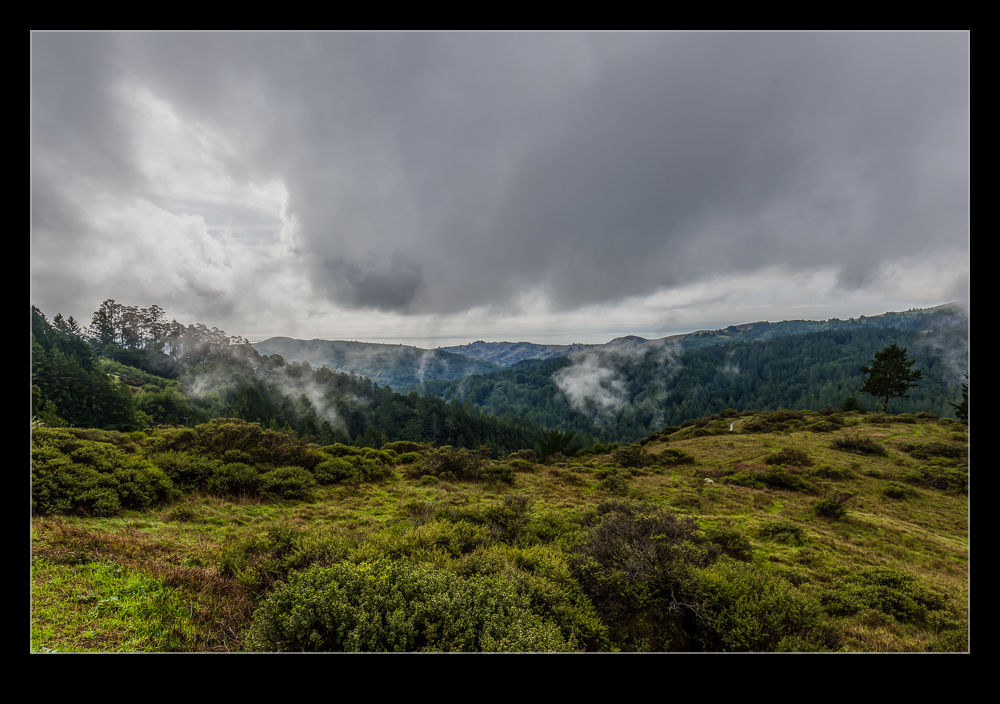 My friend John from Chicago was out in San Francisco for the weekend and we arranged to get together for a walk up in the hills of Marin County. We headed to Mt Tamalpais to walk the trails there. The weather was not ideal with rain and low cloud when we set off but, as we got closer, the rain eased up, even if the cloud didn’t. Even so, it meant we were going to be okay to walk. What I hadn’t counted on was that I was going to warm up a lot as we walked and the uphill element of the second half of the walk was going to mean I was a touch overdressed! I was dry though.
My friend John from Chicago was out in San Francisco for the weekend and we arranged to get together for a walk up in the hills of Marin County. We headed to Mt Tamalpais to walk the trails there. The weather was not ideal with rain and low cloud when we set off but, as we got closer, the rain eased up, even if the cloud didn’t. Even so, it meant we were going to be okay to walk. What I hadn’t counted on was that I was going to warm up a lot as we walked and the uphill element of the second half of the walk was going to mean I was a touch overdressed! I was dry though.
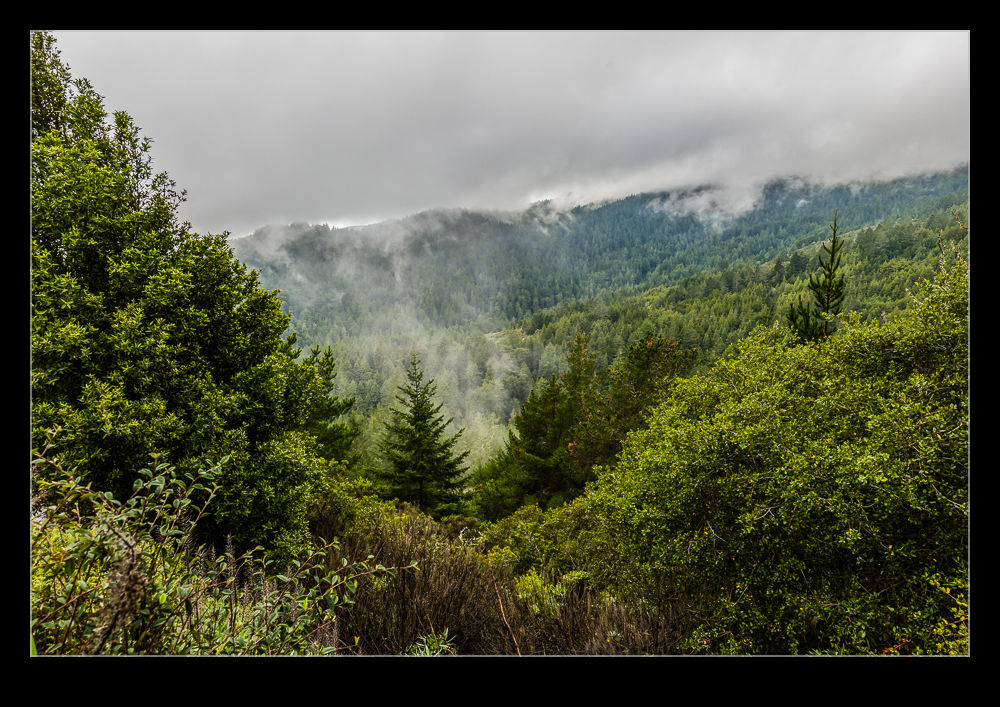 I left the main camera in the car rather than lug it all around. However, I did have my phone and it was good for some shots. Also, I have been playing around with Photo Sphere from Google recently. I got a sphere while down in the woods. You can see it here. https://plus.google.com/u/0/104745382077938728957/photos/photo/6089868108315918482?pid=6089868108315918482&oid=104745382077938728957
I left the main camera in the car rather than lug it all around. However, I did have my phone and it was good for some shots. Also, I have been playing around with Photo Sphere from Google recently. I got a sphere while down in the woods. You can see it here. https://plus.google.com/u/0/104745382077938728957/photos/photo/6089868108315918482?pid=6089868108315918482&oid=104745382077938728957
 When we got back to the car, we drove along the ridge above the valley where Muir Woods is located. The clouds were beginning to break up a little and the combination of the light and the clouds still on the hills looked great. I struggle to take what I see in those situations and turn it into a photograph but hopefully this gives you some idea of what was there. The dynamic range is one thing to deal with in processing but the feel is something harder to translate.
When we got back to the car, we drove along the ridge above the valley where Muir Woods is located. The clouds were beginning to break up a little and the combination of the light and the clouds still on the hills looked great. I struggle to take what I see in those situations and turn it into a photograph but hopefully this gives you some idea of what was there. The dynamic range is one thing to deal with in processing but the feel is something harder to translate.
Marin Civic Center
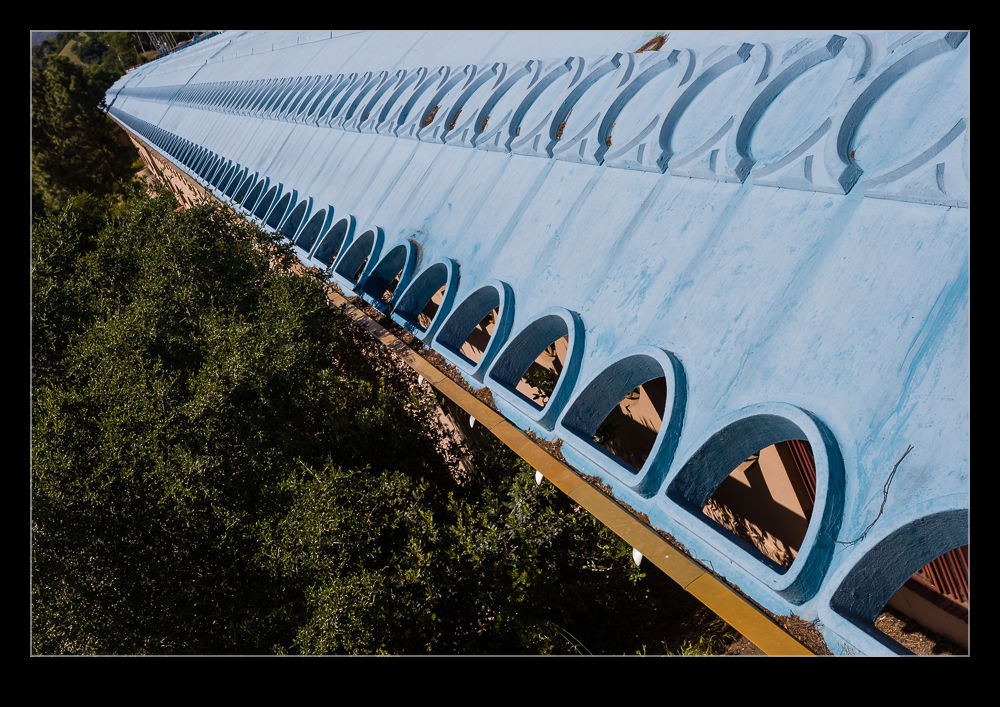 This post comes as a single piece but it is a combination of different shoots. Marin County’s offices are located in San Rafael and are an impressive structure designed by the famed architect Frank Lloyd Wright. We saw plenty of his work in Chicago and my sister is a bit of a fan of his work. When she was visiting, I thought a trip across would be just what she wanted. We had actually been there once before on a trip we all made several years ago. On that day, it was raining heavily and I didn’t know exactly where we could go so this time we combined some research with a sunny day. It helped that it was a weekend so the parking lots were mostly empty.
This post comes as a single piece but it is a combination of different shoots. Marin County’s offices are located in San Rafael and are an impressive structure designed by the famed architect Frank Lloyd Wright. We saw plenty of his work in Chicago and my sister is a bit of a fan of his work. When she was visiting, I thought a trip across would be just what she wanted. We had actually been there once before on a trip we all made several years ago. On that day, it was raining heavily and I didn’t know exactly where we could go so this time we combined some research with a sunny day. It helped that it was a weekend so the parking lots were mostly empty.
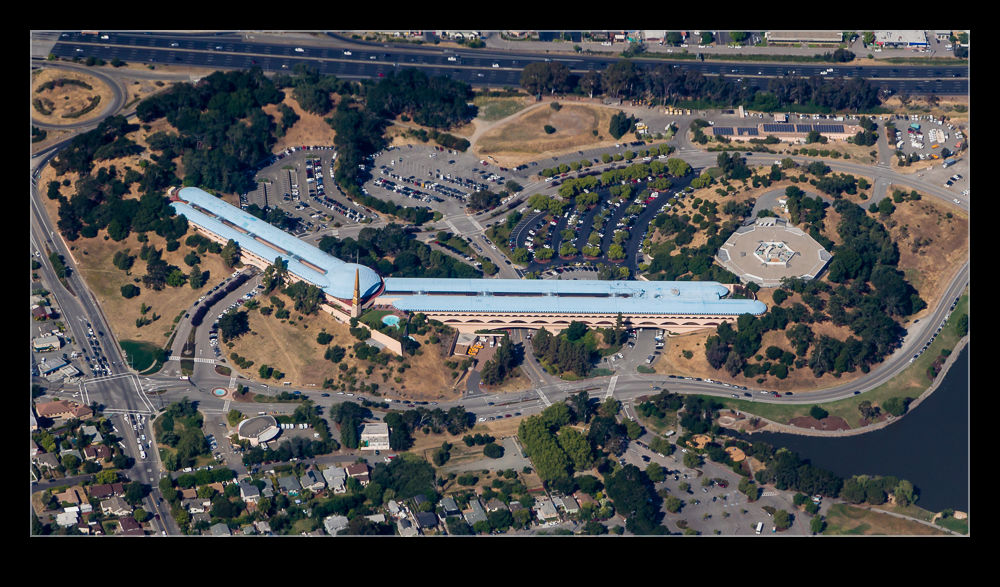 For those of you that have watched the Star Wars movies and more particularly this recent ones, the building may look rather familiar. George Lucas is a local resident and I think there is a fair chance that the building influenced him when creating Naboo. The building is a long structure in two parts with a domed area at the join with a gold colored spire. It is quite something. Photographing it is, however, rather tricky. There is not a good location to get the full effect in one shot since tree coverage tends to block the views of one part when the other is in shot. However, a good wander around will allow a number of cool views.
For those of you that have watched the Star Wars movies and more particularly this recent ones, the building may look rather familiar. George Lucas is a local resident and I think there is a fair chance that the building influenced him when creating Naboo. The building is a long structure in two parts with a domed area at the join with a gold colored spire. It is quite something. Photographing it is, however, rather tricky. There is not a good location to get the full effect in one shot since tree coverage tends to block the views of one part when the other is in shot. However, a good wander around will allow a number of cool views.
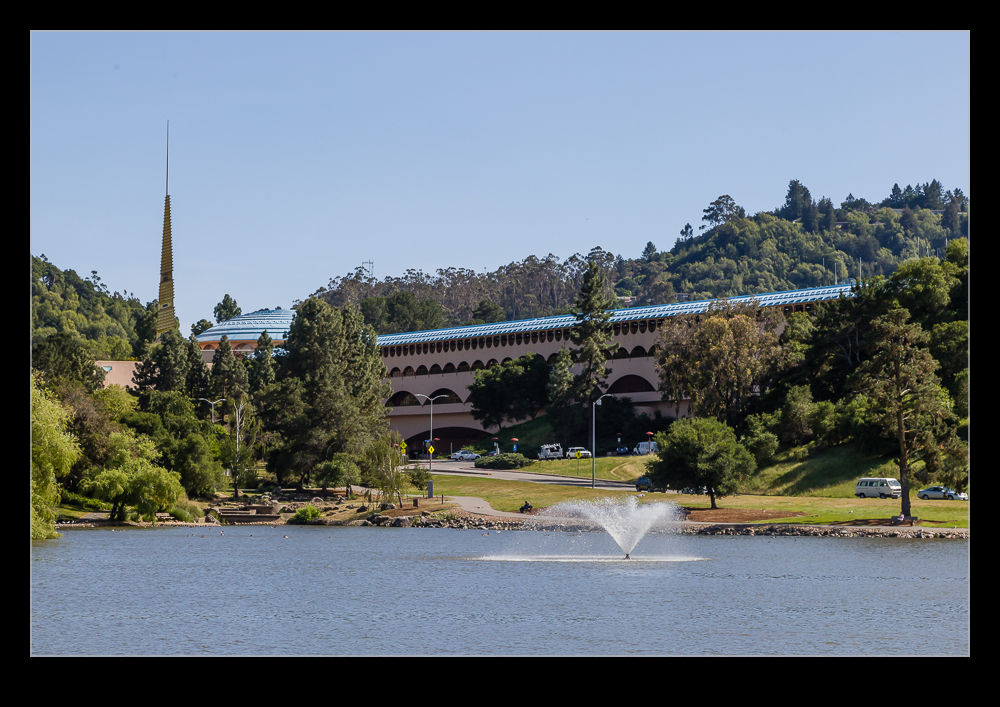 To bring this up to date, I was on a flight back to Oakland recently that ended up coming down over this part of Marin County. Out of my window appeared the Civic Center. Shooting directly downwards through a plane window is usually not something that works well since distortion can be bad. However, on this occasion, I got lucky and so now I have some more shots that show the whole building from an angle most people don’t get at all!
To bring this up to date, I was on a flight back to Oakland recently that ended up coming down over this part of Marin County. Out of my window appeared the Civic Center. Shooting directly downwards through a plane window is usually not something that works well since distortion can be bad. However, on this occasion, I got lucky and so now I have some more shots that show the whole building from an angle most people don’t get at all!
Point Bonita Lighthouse
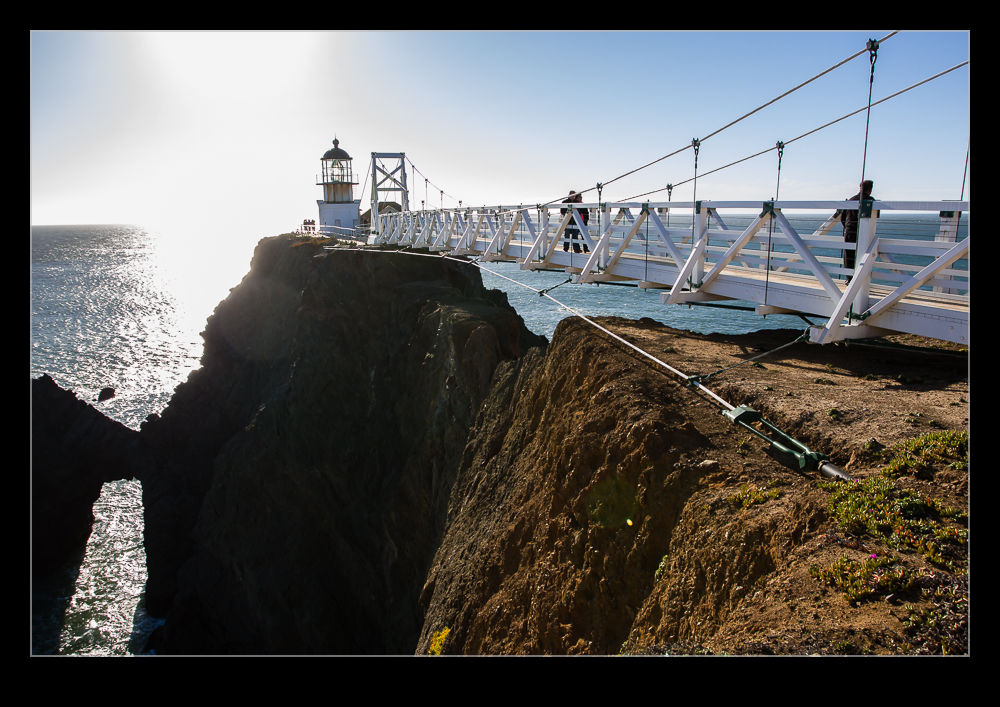 Go out to the end of the Marin Headlands and you reach Point Bonita. At the very end of the land is a lighthouse to protect the rocky entrance to the Golden Gate itself. I didn’t know this existed until watching Sunday Night Football one night. As is usual for the show, they had a series of fill in shots of local settings between the plays. This lighthouse was one of the subjects so I did a bit of checking on Google Earth to find out where it is. Then, Nancy and I headed out to visit it. However, that trip was frustrated by some persistent fog so we never made it out to the light.
Go out to the end of the Marin Headlands and you reach Point Bonita. At the very end of the land is a lighthouse to protect the rocky entrance to the Golden Gate itself. I didn’t know this existed until watching Sunday Night Football one night. As is usual for the show, they had a series of fill in shots of local settings between the plays. This lighthouse was one of the subjects so I did a bit of checking on Google Earth to find out where it is. Then, Nancy and I headed out to visit it. However, that trip was frustrated by some persistent fog so we never made it out to the light.
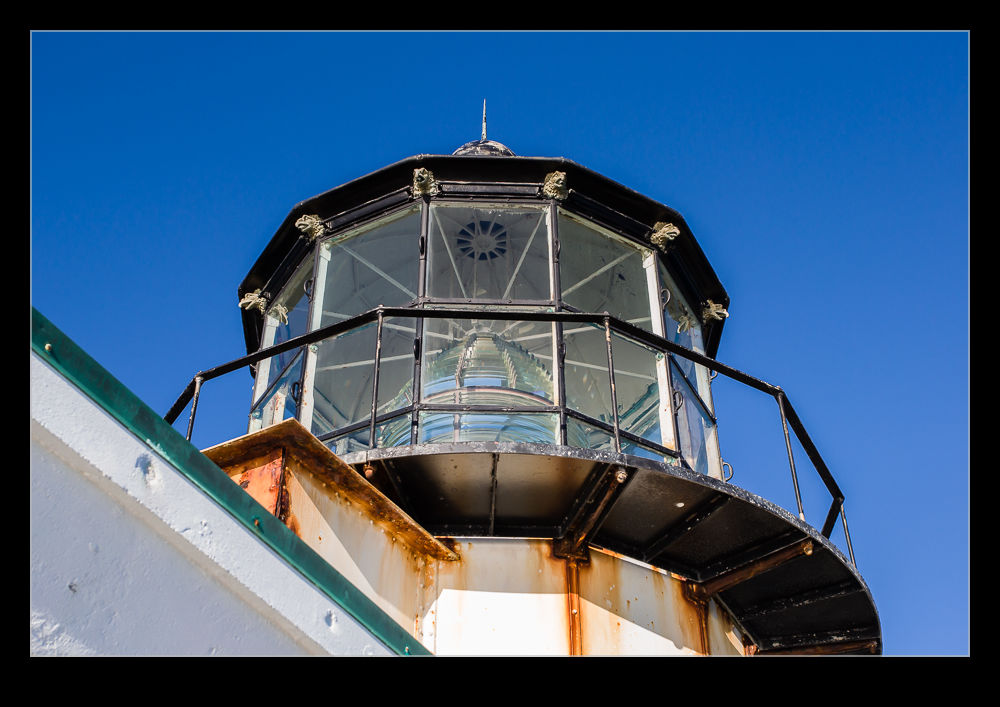 This time we were there on a far nicer day. It was towards the end of the afternoon and the light was becoming lovely. The view back towards the city was getting very attractive as the light was dropping. However, what I hadn’t counted on was that they close off the lighthouse quite early. It sits out on a rocky outcrop with a suspension bridge to reach it. However, this is not the problem. The walk down involves a short tunnel and this is what gets closed off when they shut things up. Fortunately, the rangers told us what time it was closing and how much time we had. Therefore, we zipped straight down to the lighthouse and then worked our way back. As long as we were passed the tunnel in time, we would be fine. As it was, we did not end up feeling rushed. We even saw people walking down as we left although I am not sure how far they ended up getting.
This time we were there on a far nicer day. It was towards the end of the afternoon and the light was becoming lovely. The view back towards the city was getting very attractive as the light was dropping. However, what I hadn’t counted on was that they close off the lighthouse quite early. It sits out on a rocky outcrop with a suspension bridge to reach it. However, this is not the problem. The walk down involves a short tunnel and this is what gets closed off when they shut things up. Fortunately, the rangers told us what time it was closing and how much time we had. Therefore, we zipped straight down to the lighthouse and then worked our way back. As long as we were passed the tunnel in time, we would be fine. As it was, we did not end up feeling rushed. We even saw people walking down as we left although I am not sure how far they ended up getting.
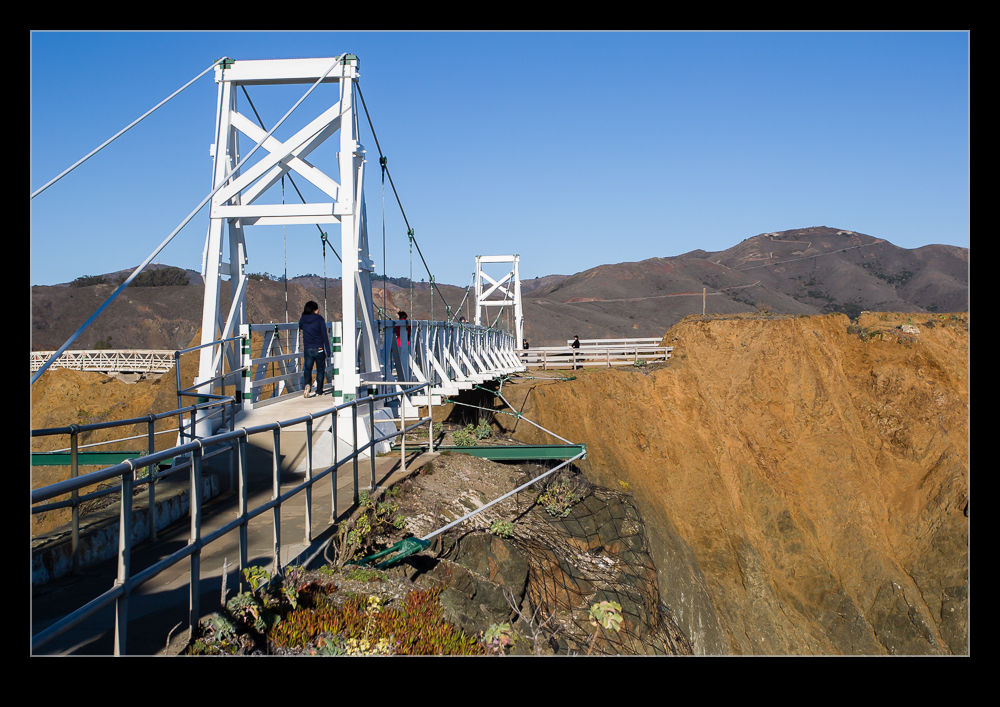 The lighthouse itself is not terribly large. Its location is what makes it so interesting. Going at the time of day we did, it was the hardest bit to shoot since you were looking into the setting sun. However, it did provide some good options. The structure of the bridge is cool in itself and I spent a lot of time looking at it. If you are a nervous person on structures that are flexible, this bridge might not be for you. If you are the only one on it, you might be okay. However, the chances of that are limited so, with others moving across, you will certainly feel it move! You have been warned!
The lighthouse itself is not terribly large. Its location is what makes it so interesting. Going at the time of day we did, it was the hardest bit to shoot since you were looking into the setting sun. However, it did provide some good options. The structure of the bridge is cool in itself and I spent a lot of time looking at it. If you are a nervous person on structures that are flexible, this bridge might not be for you. If you are the only one on it, you might be okay. However, the chances of that are limited so, with others moving across, you will certainly feel it move! You have been warned!
Nike Missile Battery
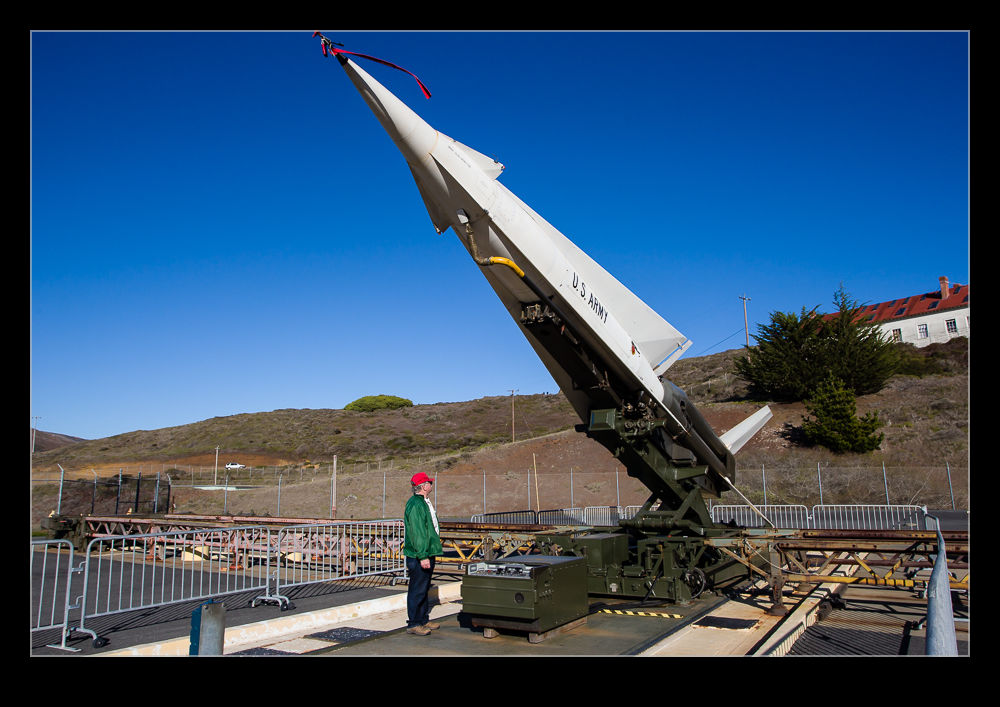 At the height of the cold war, the possibility of large waves of Soviet bombers attacking the United States was considered high. Defending the major cities and defense installations was a high priority. The result was one of (if not the) most expensive defense programs ever. The Nike missile program was an air defense system developed by the US Army. Intended to replace the anti-aircraft gun batteries that were considered incapable of defending against jet aircraft, the goal of Nike was to take out incoming aircraft before they were able to drop thermonuclear weapons on the US. Since the range at which nuclear weapons could cause devastation was high, interception far away from the target was the goal.
At the height of the cold war, the possibility of large waves of Soviet bombers attacking the United States was considered high. Defending the major cities and defense installations was a high priority. The result was one of (if not the) most expensive defense programs ever. The Nike missile program was an air defense system developed by the US Army. Intended to replace the anti-aircraft gun batteries that were considered incapable of defending against jet aircraft, the goal of Nike was to take out incoming aircraft before they were able to drop thermonuclear weapons on the US. Since the range at which nuclear weapons could cause devastation was high, interception far away from the target was the goal.
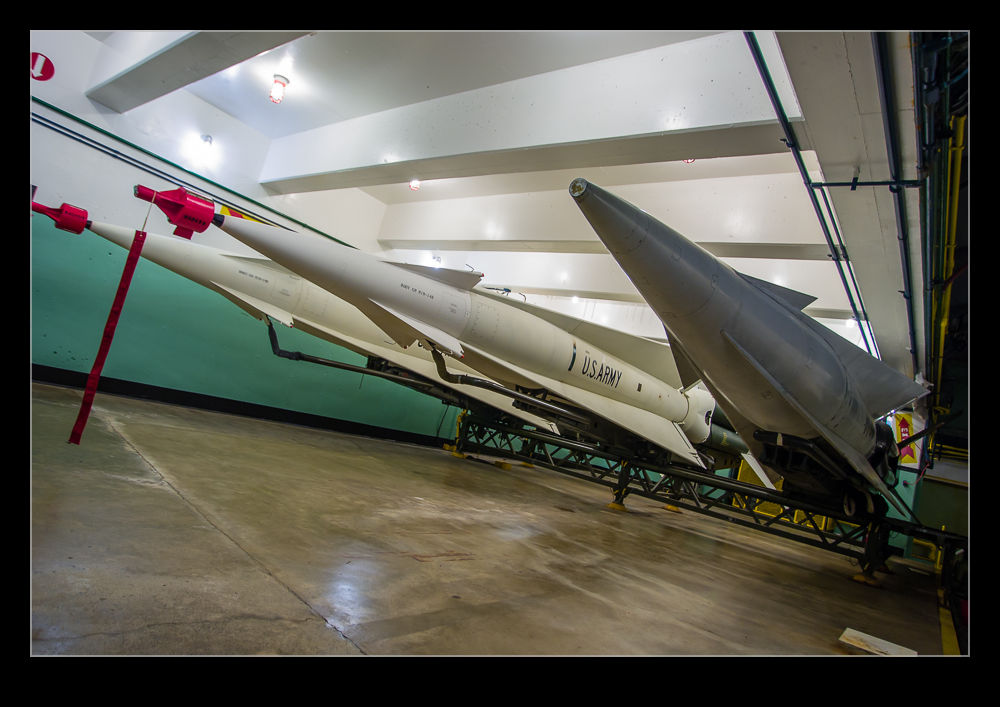 Several different missiles were developed as part of the Nike system. Two if these missiles were the Ajax and the Hercules. Ajax was the first of these two to be developed. It introduced analog computing and tracking of both the target and the missile with the aim of bringing the missile to a successful interception. The range of Ajax was relatively limited and large number of batteries was deployed around the major cities and defense installations.
Several different missiles were developed as part of the Nike system. Two if these missiles were the Ajax and the Hercules. Ajax was the first of these two to be developed. It introduced analog computing and tracking of both the target and the missile with the aim of bringing the missile to a successful interception. The range of Ajax was relatively limited and large number of batteries was deployed around the major cities and defense installations.
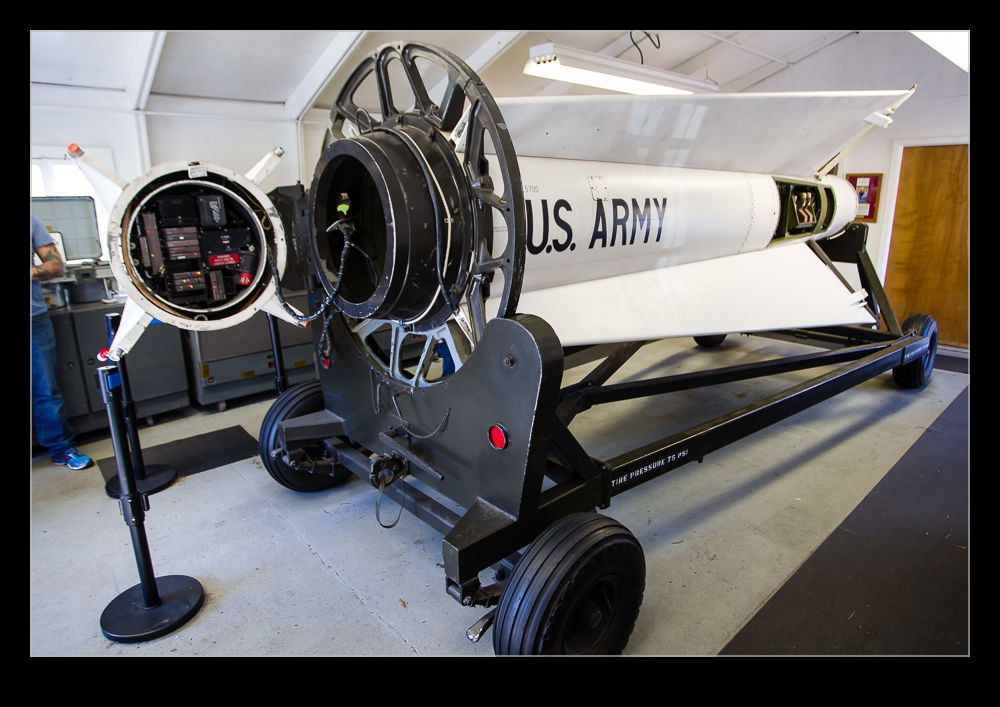 Meanwhile, the Hercules missile was undergoing development. It introduced a far larger booster (actually four of the Ajax boosters strapped together), a larger sustainer motor and new warheads including conventional and nuclear options. The longer range and greater intercept capability of the system meant that fewer batteries were required to achieve coverage and they could be slightly further out from the area being protected. With a range of approximately 100 miles, the Hercules missile could reach its target in approximately 90 seconds. The enormous booster gave it a phenomenal acceleration. By the time the tail of the booster reached the point where the tip of the missile had been on the launcher, the missile was already supersonic.
Meanwhile, the Hercules missile was undergoing development. It introduced a far larger booster (actually four of the Ajax boosters strapped together), a larger sustainer motor and new warheads including conventional and nuclear options. The longer range and greater intercept capability of the system meant that fewer batteries were required to achieve coverage and they could be slightly further out from the area being protected. With a range of approximately 100 miles, the Hercules missile could reach its target in approximately 90 seconds. The enormous booster gave it a phenomenal acceleration. By the time the tail of the booster reached the point where the tip of the missile had been on the launcher, the missile was already supersonic.
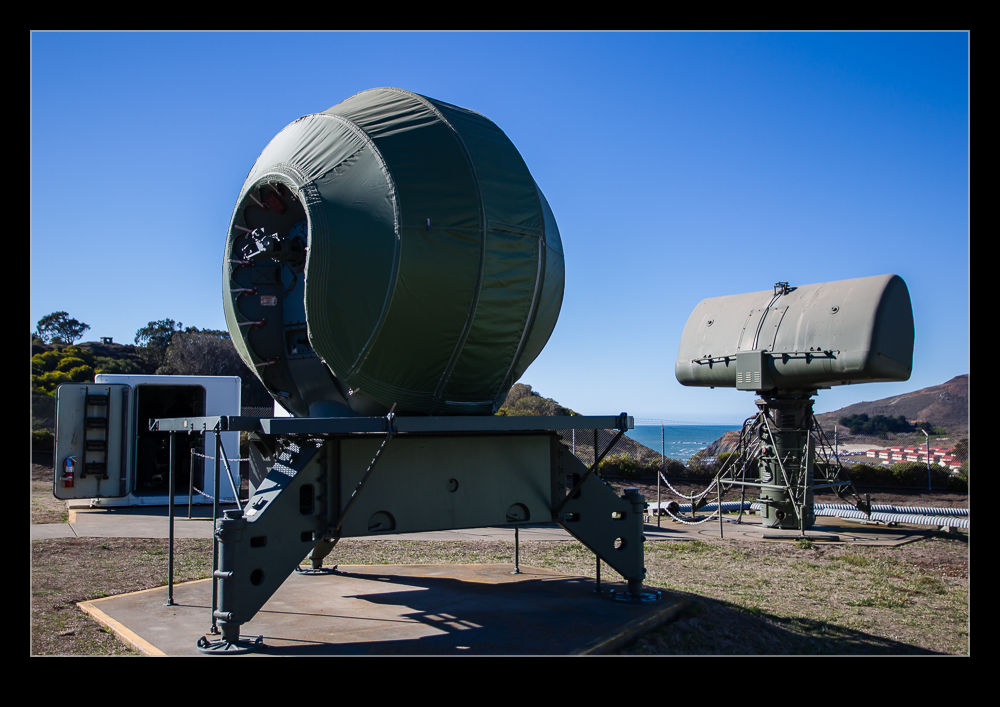 While Hercules had a notional capability against ballistic missiles, the move away from bombers meant the system was more vulnerable a technology advanced. Ultimately, as part of arms limitation treaties, it was decommissioned as part of the anti-ballistic missile systems. While hundreds of installations had once been in service across the United States and other countries, virtually nothing of them now remains.
While Hercules had a notional capability against ballistic missiles, the move away from bombers meant the system was more vulnerable a technology advanced. Ultimately, as part of arms limitation treaties, it was decommissioned as part of the anti-ballistic missile systems. While hundreds of installations had once been in service across the United States and other countries, virtually nothing of them now remains.
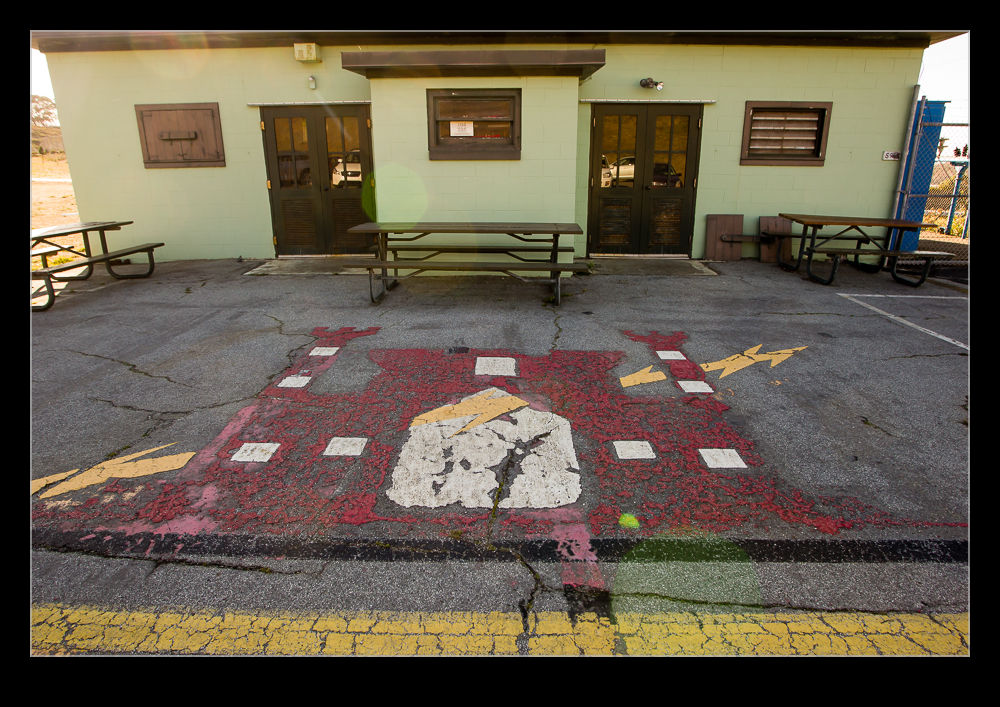 The only relatively intact location is just outside San Francisco on the Marin Headlands. Located in a National Park, SF-88 opens to the public most Saturdays. The last of over a dozen installations in the San Francisco area, it has preserved the core infrastructure of the installation even if it is condensed into a smaller area that was the case when it was operational. The facility has a search radar and a tracking radar on display. The search radar was used to identify the targets initially. Then two tracking radar were used to carry out the attack.
The only relatively intact location is just outside San Francisco on the Marin Headlands. Located in a National Park, SF-88 opens to the public most Saturdays. The last of over a dozen installations in the San Francisco area, it has preserved the core infrastructure of the installation even if it is condensed into a smaller area that was the case when it was operational. The facility has a search radar and a tracking radar on display. The search radar was used to identify the targets initially. Then two tracking radar were used to carry out the attack.
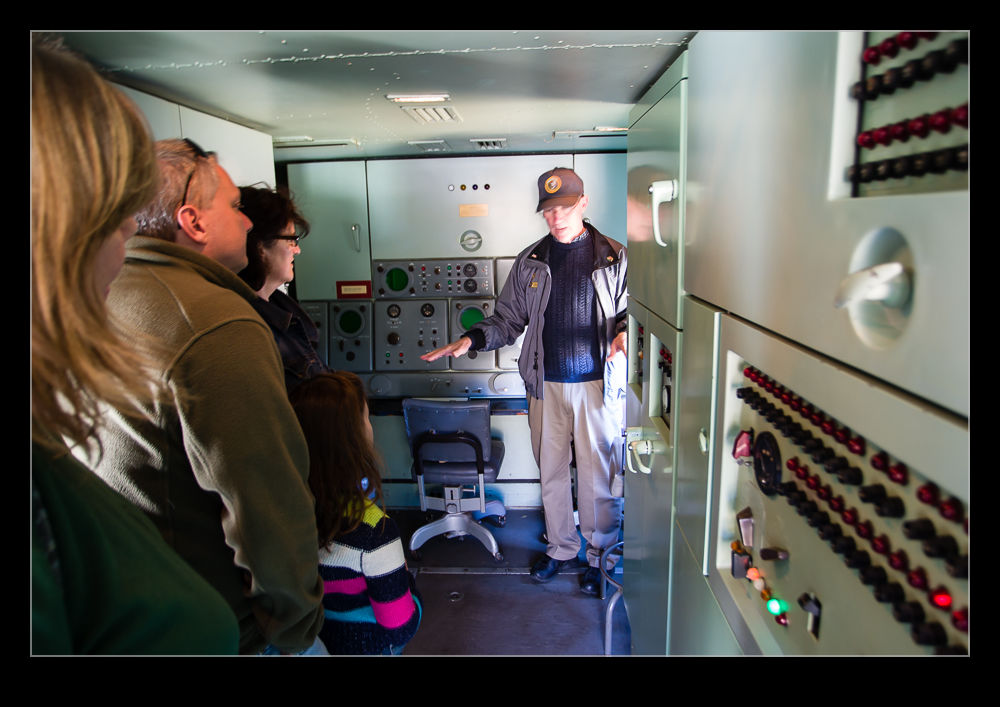 The first tracking radar would lock on to the target. The second would track the missile as it was outbound. The missile did not guide itself. It received command guidance from the ground. The two tracking radar would feed data to the analog computers that controlled the system. It would then determine the guidance parameters to be transmitted to the missile. The missile had four antennae on board – two to receive and two to transmit. It would then make course corrections based on the signals received. It would initially boost to very high altitude before arcing over and homing in on the target. The aim was to detonate just ahead of the target to either provide a cloud of fragments into which it would fly or, in the case of the nuclear warheads, to obliterate it. Even if the nuclear warhead detonated too far away to disable the aircraft, the electromagnetic pulse was considered likely to render the weapons inoperative.
The first tracking radar would lock on to the target. The second would track the missile as it was outbound. The missile did not guide itself. It received command guidance from the ground. The two tracking radar would feed data to the analog computers that controlled the system. It would then determine the guidance parameters to be transmitted to the missile. The missile had four antennae on board – two to receive and two to transmit. It would then make course corrections based on the signals received. It would initially boost to very high altitude before arcing over and homing in on the target. The aim was to detonate just ahead of the target to either provide a cloud of fragments into which it would fly or, in the case of the nuclear warheads, to obliterate it. Even if the nuclear warhead detonated too far away to disable the aircraft, the electromagnetic pulse was considered likely to render the weapons inoperative.
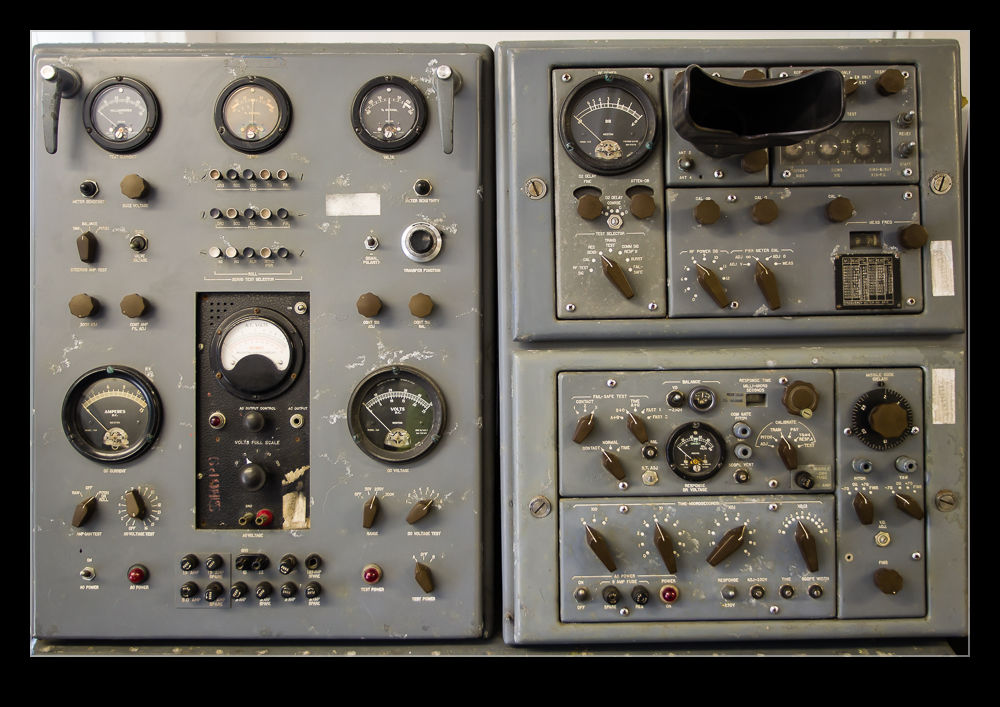 The control systems are on display in metal cabins above ground. These systems were considered mobile if required, hence them not being buried. The same was not the case for the missile bunkers. They are underground with hatches to the surface through which the missiles would be raised and lifted into the near vertical launch position. These facilities are still in place and the tour includes the chance to go underground, see a selection of Hercules missiles on the launch racks including one that is ready to lift. When the guide has finished providing an explanation of the missiles and their usage, a climb back up out of the bunker allows you to see the missile being raised up out of the ground and into its launch position.
The control systems are on display in metal cabins above ground. These systems were considered mobile if required, hence them not being buried. The same was not the case for the missile bunkers. They are underground with hatches to the surface through which the missiles would be raised and lifted into the near vertical launch position. These facilities are still in place and the tour includes the chance to go underground, see a selection of Hercules missiles on the launch racks including one that is ready to lift. When the guide has finished providing an explanation of the missiles and their usage, a climb back up out of the bunker allows you to see the missile being raised up out of the ground and into its launch position.
Only one missile could be fired at a time since the control system could only manage the tracking of one missile. However, four launchers were part of the battery so multiple engagements could take place and batteries elsewhere in the area could also engage. Once the missile had finished its flight, another could be loaded to go. However, the large booster did leave its mark. While it was scheduled to be jettisoned shortly after launch and to fall out to see, the intense heat could set fire to surrounding debris and the guides also talk about some falling propellant still burning as it came down. Not a good place to be. The sound of launch was also intense, even when in protected environments.
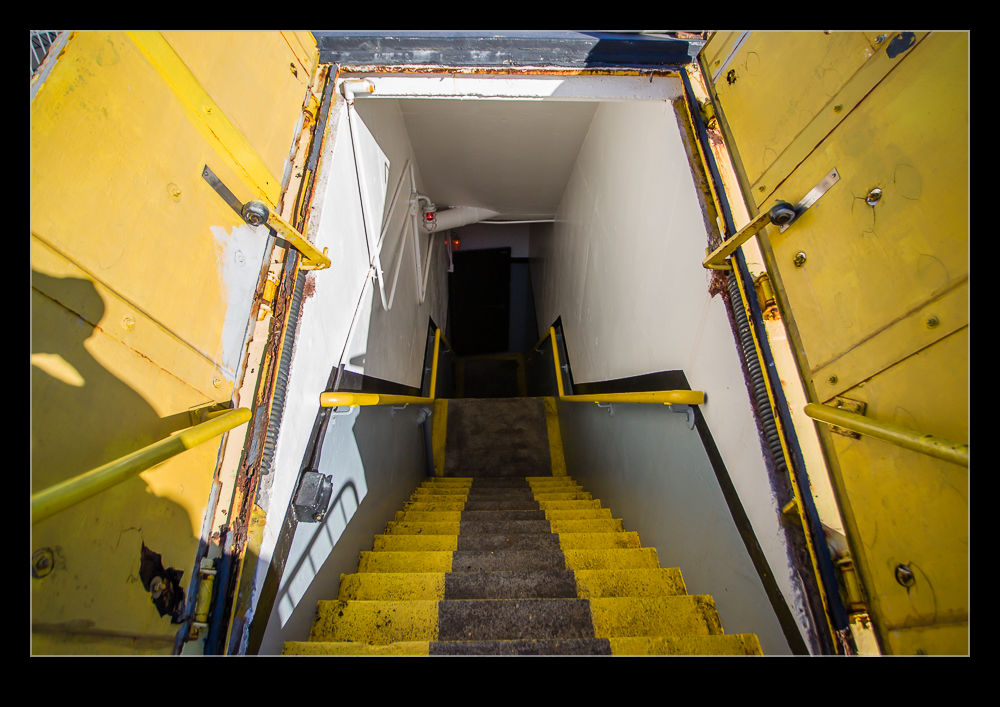 No launches ever took place within the United States of deployed missiles. However, regular launches were undertaken by crews for training. These were carried out at White Sands Missile Range with the crews deploying there periodically to practice actually firing the missile. These missiles obviously did not have the nuclear warheads but were aimed at incoming target drones, some examples of which are also part of the installation.
No launches ever took place within the United States of deployed missiles. However, regular launches were undertaken by crews for training. These were carried out at White Sands Missile Range with the crews deploying there periodically to practice actually firing the missile. These missiles obviously did not have the nuclear warheads but were aimed at incoming target drones, some examples of which are also part of the installation.
The Marin Headlands are full of military installations long retired. Gun batteries designed to protect the Bay Area from naval assault are common. However, the Nike Installation SF-88 is a unique example of some more modern weaponry that was located all around San Francisco with most people being totally unaware it was there. A visit to see this amazing place is well worthwhile if you are in the area.
Muir Woods
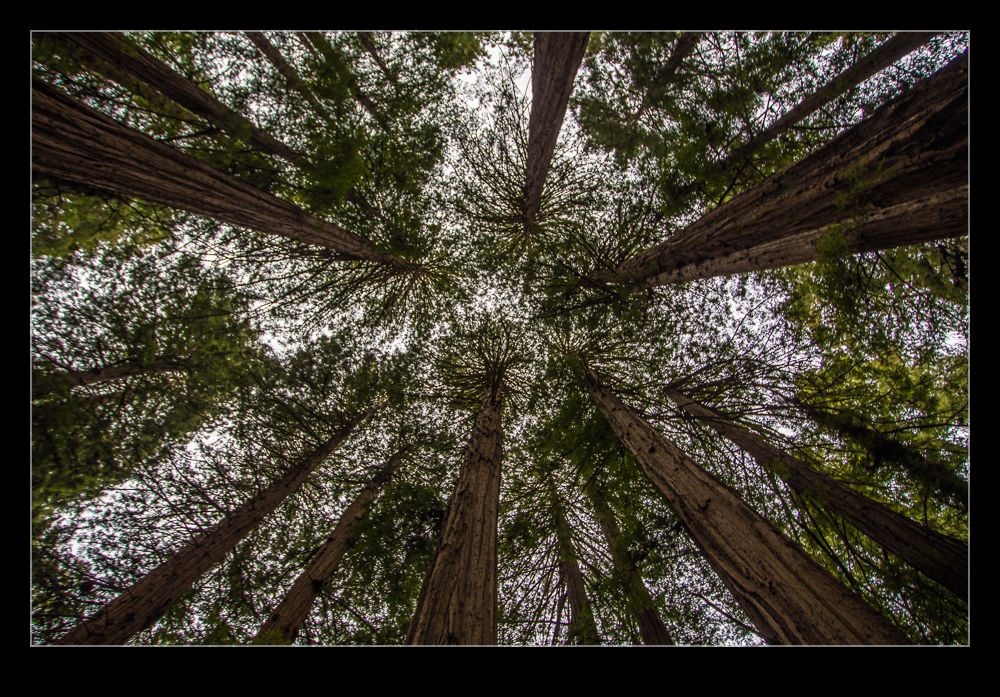 Having visitors is always a good excuse to go to places that you haven’ been to for a while. Muir Woods National Monument was one such destination. If only we had known just how many other people had the same idea, we might have aimed to get there a lot earlier in the day. As it was, we got there a bit alter in the afternoon. A short while later and it might have been a lot easier to park. Of course, late in the day in winter means fading light and being in a heavily wooded area means even less light!
Having visitors is always a good excuse to go to places that you haven’ been to for a while. Muir Woods National Monument was one such destination. If only we had known just how many other people had the same idea, we might have aimed to get there a lot earlier in the day. As it was, we got there a bit alter in the afternoon. A short while later and it might have been a lot easier to park. Of course, late in the day in winter means fading light and being in a heavily wooded area means even less light!
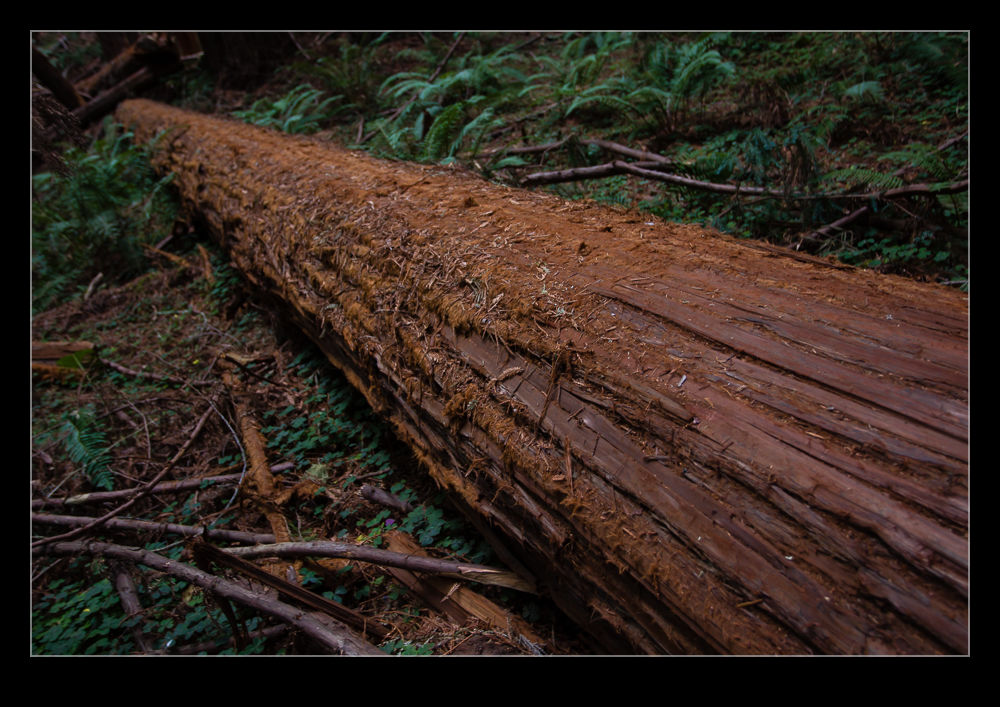 Muir Woods is a great place to wander. Having a lot of other visitors means it is a little less tranquil. My previous visits have obviously been off peak and usually involved colder and damper weather. This time it was dry and warm(ish). The trees are majestic and often interestingly shaped. However, being so close to such large trees as coastal redwoods does make it hard to get the images that you have in your mind.
Muir Woods is a great place to wander. Having a lot of other visitors means it is a little less tranquil. My previous visits have obviously been off peak and usually involved colder and damper weather. This time it was dry and warm(ish). The trees are majestic and often interestingly shaped. However, being so close to such large trees as coastal redwoods does make it hard to get the images that you have in your mind.
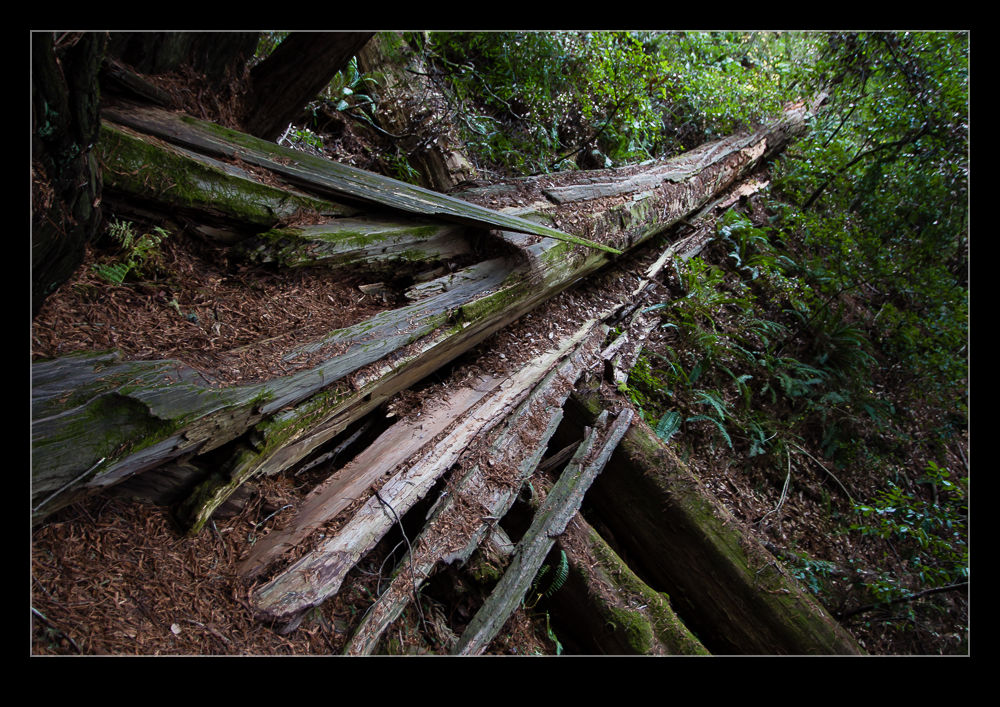 The light is tricky and the angles wide. Some playing with HDR and panoramas certainly helped out. Sometimes it was just fun to look straight up. The shapes there are exactly as you imagine them. The dynamic range is so large that even HDR doesn’t always cover it (at least the way I was bracketing the shots) but it still worked out okay.
The light is tricky and the angles wide. Some playing with HDR and panoramas certainly helped out. Sometimes it was just fun to look straight up. The shapes there are exactly as you imagine them. The dynamic range is so large that even HDR doesn’t always cover it (at least the way I was bracketing the shots) but it still worked out okay.
Fortifications
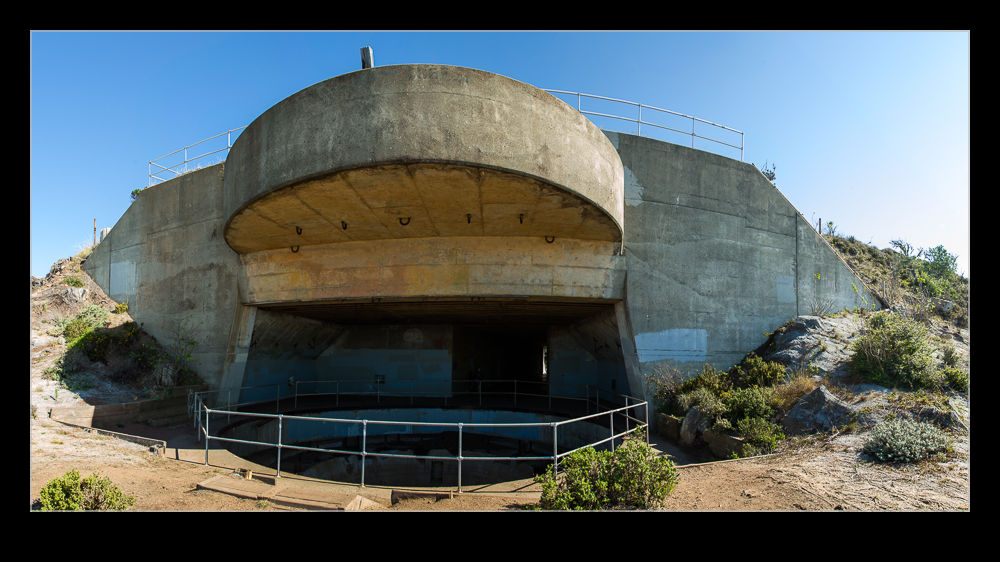 The Marin Headlands provide a great place to enjoy some lovely coastal scenery. They were also a militarily significant location for many years. Protection of the entrance to San Francisco Bay meant that a string of forts were built along the coast here. The high ground provided an excellent base for large guns to take on an attacking fleet. Some of these forts were operational while other emplacements were built just in time to be considered obsolete and they were never finished. Now you can walk through the gun emplacements and imagine what they would have been like when operational.
The Marin Headlands provide a great place to enjoy some lovely coastal scenery. They were also a militarily significant location for many years. Protection of the entrance to San Francisco Bay meant that a string of forts were built along the coast here. The high ground provided an excellent base for large guns to take on an attacking fleet. Some of these forts were operational while other emplacements were built just in time to be considered obsolete and they were never finished. Now you can walk through the gun emplacements and imagine what they would have been like when operational.
Foggy Golden Gate Bridge
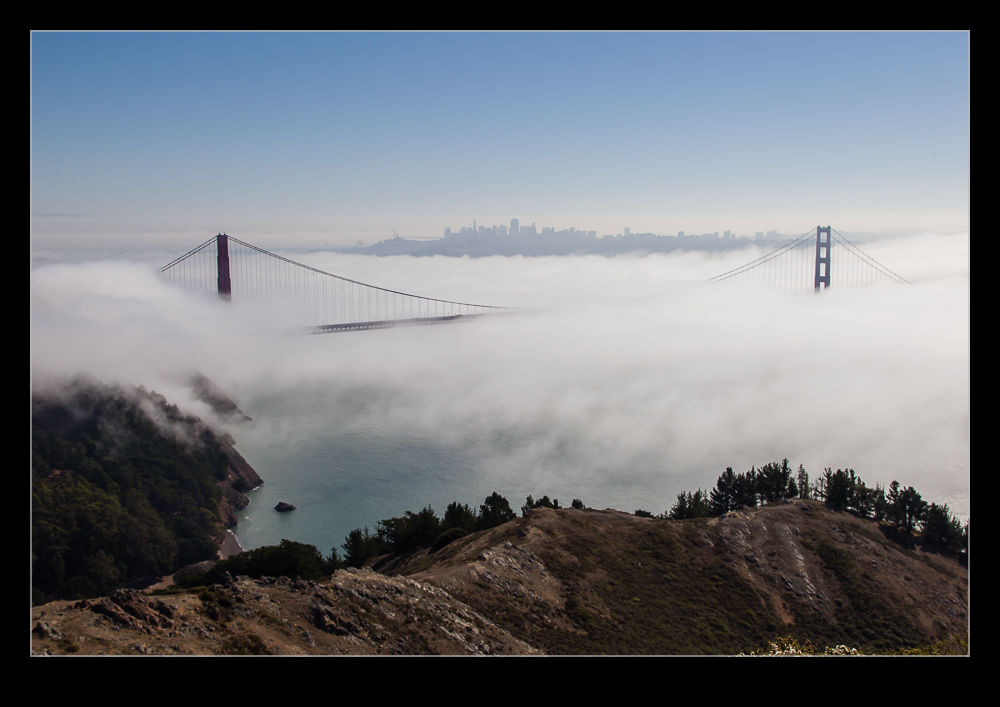 Moving means you don’t always have a lot of time for having fun. However, when your move includes a time when you are in limbo between two places and staying in temporary accommodation, you actually have more time than you think. Sitting around in a hotel room can get old pretty quickly so scheduling some exploration makes a lot more sense. One place that a colleague had mentioned was out on the Marin headlands. There are a number of areas out there that caught my interest including one that wasn’t open on this day so will be the subject of a return trip and a future blog post I hope.
Moving means you don’t always have a lot of time for having fun. However, when your move includes a time when you are in limbo between two places and staying in temporary accommodation, you actually have more time than you think. Sitting around in a hotel room can get old pretty quickly so scheduling some exploration makes a lot more sense. One place that a colleague had mentioned was out on the Marin headlands. There are a number of areas out there that caught my interest including one that wasn’t open on this day so will be the subject of a return trip and a future blog post I hope.
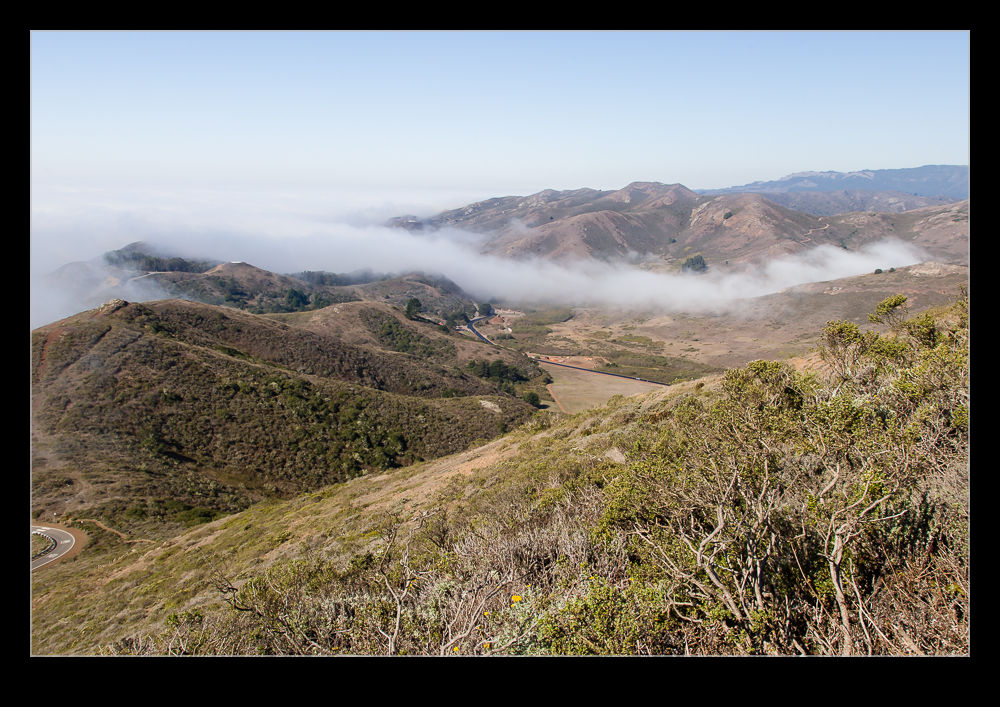 We had plenty to look forward to and the forecast was promising so off we headed. Of course, we hadn’t counted on the fickle Bay Area weather. Leaving the East Bay in glorious sunshine, we got to the Bay Bridge and drove into a wall of fog. I had chosen this route as I had yet to travel over the new bridge having seen it under construction for a number of years. This time I did get to drive over it but I didn’t get to see it! Oh well, on through the city of San Francisco towards the Golden Gate Bridge and straight back into the fog.
We had plenty to look forward to and the forecast was promising so off we headed. Of course, we hadn’t counted on the fickle Bay Area weather. Leaving the East Bay in glorious sunshine, we got to the Bay Bridge and drove into a wall of fog. I had chosen this route as I had yet to travel over the new bridge having seen it under construction for a number of years. This time I did get to drive over it but I didn’t get to see it! Oh well, on through the city of San Francisco towards the Golden Gate Bridge and straight back into the fog.
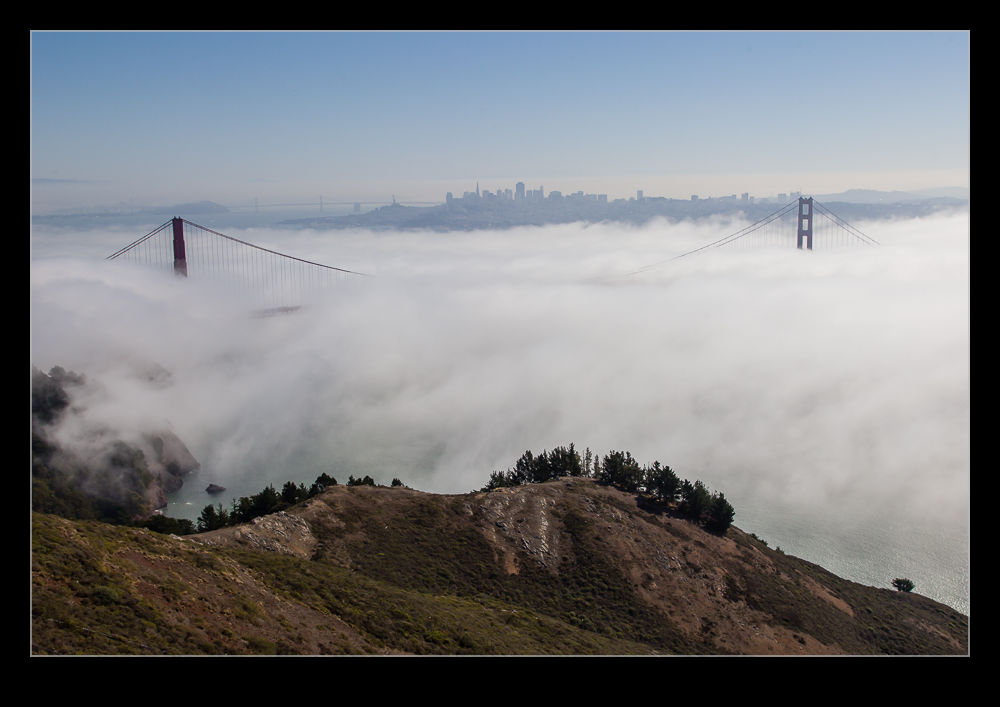 Again we drove over a bridge we couldn’t see. Then we turned out onto the Marin headlands. The drive up the coast took us out of the fog and into glorious sunshine. Looking back at the city and the bridge, it was a different story. Below us was a thick bank of fog. It also lay over some of the parts we intended to explore. As it happened, we explored some parts and saved others for another day. The fog didn’t thin while we were there. If anything, it got worse while we were there. Now we have a reason to go back – if we can forecast the weather better than we did this time!
Again we drove over a bridge we couldn’t see. Then we turned out onto the Marin headlands. The drive up the coast took us out of the fog and into glorious sunshine. Looking back at the city and the bridge, it was a different story. Below us was a thick bank of fog. It also lay over some of the parts we intended to explore. As it happened, we explored some parts and saved others for another day. The fog didn’t thin while we were there. If anything, it got worse while we were there. Now we have a reason to go back – if we can forecast the weather better than we did this time!
